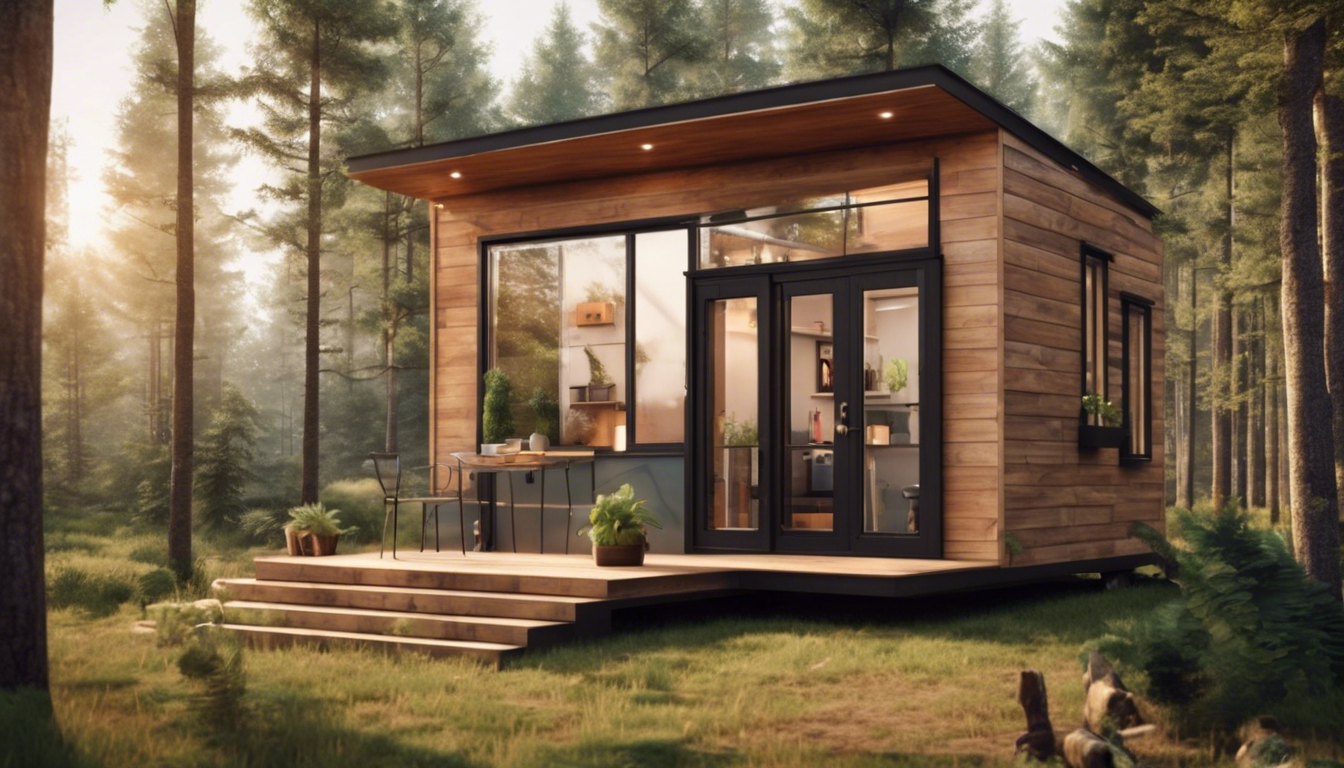Tiny homes have gained popularity in recent years as more people seek simpler living solutions.
These small living spaces, usually ranging from 100 to 400 square feet, offer a unique lifestyle that emphasizes minimalism and efficiency.
This article explores the benefits of tiny homes, including their environmental impact, financial savings, functional designs, and the freedom that comes from embracing a minimalist lifestyle.
By understanding these advantages, you can determine if tiny homes may be a fit for your needs and aspirations.
The Most Popular Modular/Tiny Home On Amazon
Financial Advantages: Cost Savings and Affordability
Tiny homes offer significant financial advantages that appeal to many homeowners.
The most notable benefit is cost savings.
Building or purchasing a tiny home typically requires a lower upfront investment compared to traditional homes.
This affordability makes homeownership accessible for individuals and families on a budget.
Additionally, tiny homes lead to reduced utility costs due to their smaller size.
Homeowners often experience lower energy bills as they consume less power for heating, cooling, and lighting.
Maintenance costs also decrease, as fewer materials and simpler structures require less upkeep.
Property taxes tend to be lower as well, further enhancing financial benefits.
Overall, tiny homes provide an economical solution for those looking to secure a home while minimizing expenses.
Designing for Functionality: Maximizing Space in Tiny Homes
Tiny homes offer unique opportunities for efficient living and design.
With limited space, the focus shifts to maximizing functionality in every area.
Homeowners should consider multifunctional furniture that serves more than one purpose.
For example, a sofa that converts into a bed allows for both seating and sleeping arrangements without occupying additional space.
Storage solutions also play a critical role in tiny homes.
Utilizing vertical space with shelves and cabinets ensures that items remain organized while minimizing clutter.
Additionally, open floor plans can create a sense of spaciousness, making tiny homes feel larger.
Choosing light colors for walls and furnishings can also enhance the feeling of openness.
By prioritizing functionality and smart design, residents can create comfortable and practical living spaces in tiny homes.
Embracing Minimalism: A Lifestyle Choice for Happiness and Freedom
Minimalism offers a clear path to happiness and freedom, especially when incorporated into living spaces like tiny homes.
Tiny homes promote a simpler lifestyle by limiting possessions and focusing on what truly matters.
Their smaller size encourages residents to downsize and declutter, leading to less stress and more peace of mind.
Living in a tiny home allows for financial savings, as they require fewer resources for maintenance and utilities.
This financial freedom opens up opportunities for travel or pursuing passions.
Additionally, tiny homes foster stronger connections with family and friends due to shared spaces.
Embracing a minimalist approach through tiny homes can transform not just how people live, but also enhance overall well-being and satisfaction.
Frequently Asked Questions
What are tiny homes?
Tiny homes are compact living spaces, typically under 400 square feet, designed to provide all the necessary amenities while maximizing space.
They emphasize a minimalist lifestyle and often incorporate eco-friendly materials.
What are the environmental benefits of living in tiny homes?
Living in tiny homes reduces your carbon footprint due to lower energy consumption, less waste, and the use of sustainable materials.
Their smaller size encourages a simpler lifestyle that promotes environmental consciousness.
How can tiny homes save me money?
Tiny homes are generally more affordable than traditional homes, resulting in lower mortgage payments, property taxes, and utility costs.
Their compact size also requires less maintenance and fewer resources.
What are some tips for maximizing space in a tiny home?
To maximize space in a tiny home, consider multi-functional furniture, vertical storage solutions, and open floor plans.
Smart design techniques like built-in storage and foldable or collapsible items can also help.
How does living in a tiny home relate to embracing minimalism?
Living in a tiny home naturally encourages minimalism by necessitating the reduction of belongings and focusing on quality over quantity.
It promotes a lifestyle centered on experiences and personal freedom rather than material possessions.




Leave a Reply